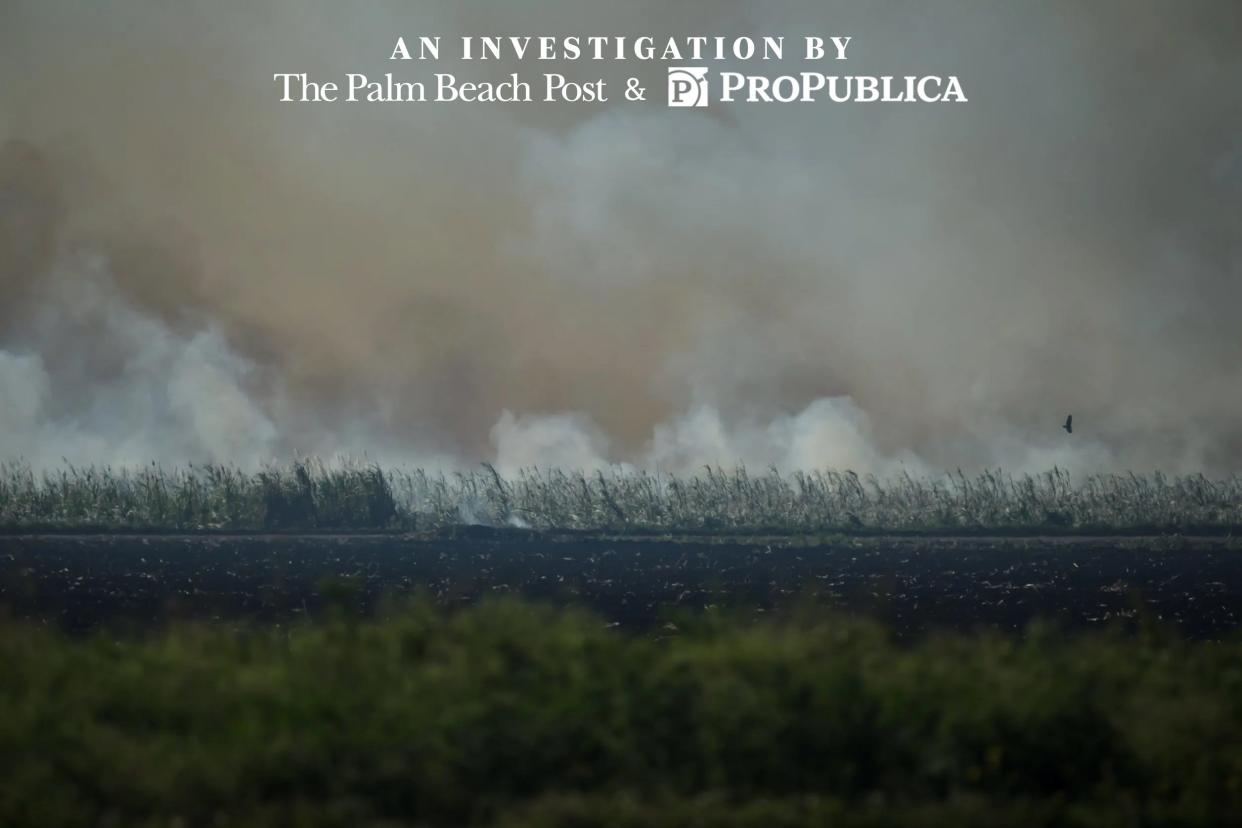Palm Beach Post, ProPublica invite public to 'Black Snow' virtual documentary screening

Support local journalism by subscribing to The Palm Beach Post. For a limited time for new subscribers, get six months of unlimited digital access including news, sports, food and dining, videos and more for only $1.
For about six months each year, farmers in Florida’s heartland burn sugar crops before harvesting to rid the plants of their outer leaves. The practice sends smoke and ash into the patchwork of largely Black and Hispanic communities known as the Glades.
More than half of America’s cane sugar comes from this region in western Palm Beach County, where residents have long complained that the smoke makes it hard for them to breathe.
Every year, the burning rains down ash and soot that locals call "black snow." It often keeps children inside their homes and schools for six months during harvest season. In Belle Glade, many use nebulizers shaped like cartoon character devices to help respiratory problems.
REGISTER HERE for free virtual event: How one country sought to combat the harmful effects of sugarcane burning
Post/ProPublica investigation: The smoke comes every year. Sugar companies say the air is safe.
Big Sugar's reach: How the sugar industry makes political friends and influences elections
Florida’s largest sugar companies maintain that cane burns are safe and heavily regulated, and that they can’t be stopped without economic harm.
But when ProPublica traveled to Brazil, it found one of the largest sugarcane producers in the world has managed to reduce the harmful effects of burning cane.
In a year-long investigation, The Palm Beach Post and ProPublica found that Florida officials’ assurances of safe air rested on the shaky underpinnings of the country’s air-monitoring system, which leaves swaths of rural America with little to no oversight. Using their own air monitoring, the news organizations produced a first-of-its-kind analysis tying cane burning to repeated spikes in pollution, which experts said posed health risks.
They also exposed how the state-run Palm Beach County Health Department ignored the recommendations of its own researchers to study the health impact of cane burning. The news organizations did an analysis and found that hospital and emergency room visits for breathing problems among patients in the Glades spiked during cane-burning season.
Investigation Part 2: 'A complete failure of the state': Authorities didn't heed researchers’ calls to study health effects of burning sugar cane
Impact of investigation: After years of complaints, Florida improves pollution monitoring near burning sugar cane fields
More impact: NASA partners with academics to study cane burning air pollution in the Glades
Brazil, however, has successfully transitioned away from the controversial practice in many parts of the country, and experts there say the U.S. should follow the nation’s lead.
Take an in-depth look at the cost of satisfying the world's sweet tooth. Moderated by ProPublica video journalist Nadia Sussman and investigative reporter Lulu Ramadan, this panel includes experts from Brazil and Florida discussing new approaches to harvesting and what those might mean for the Glades.
You can register at propublica.org/events for a free virtual screening March 2 at 6 p.m. of Sussman's short documentary and a panel discussion.
This article originally appeared on Palm Beach Post: Florida sugarcane burning: 'Black Snow' virtual documentary screening

